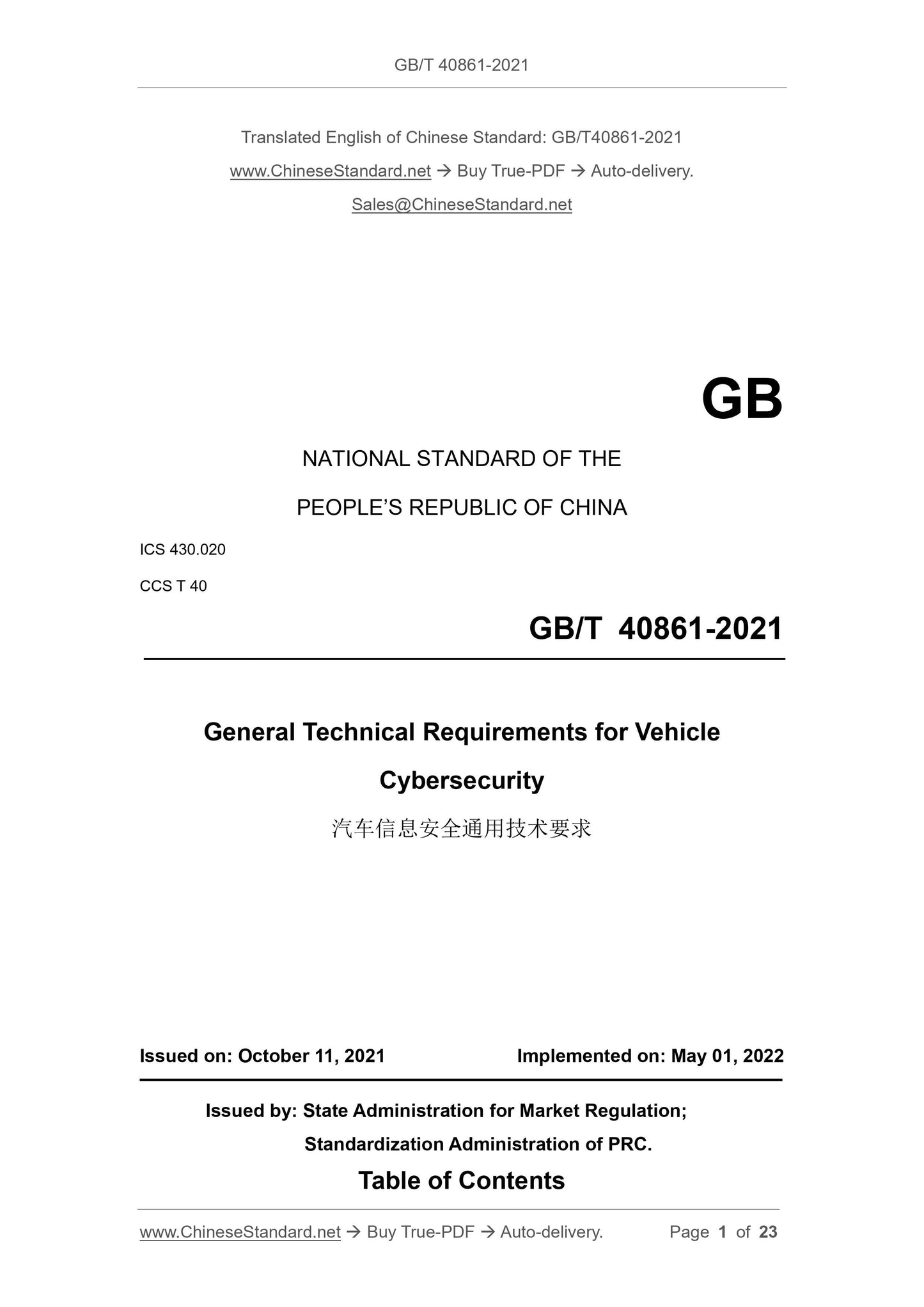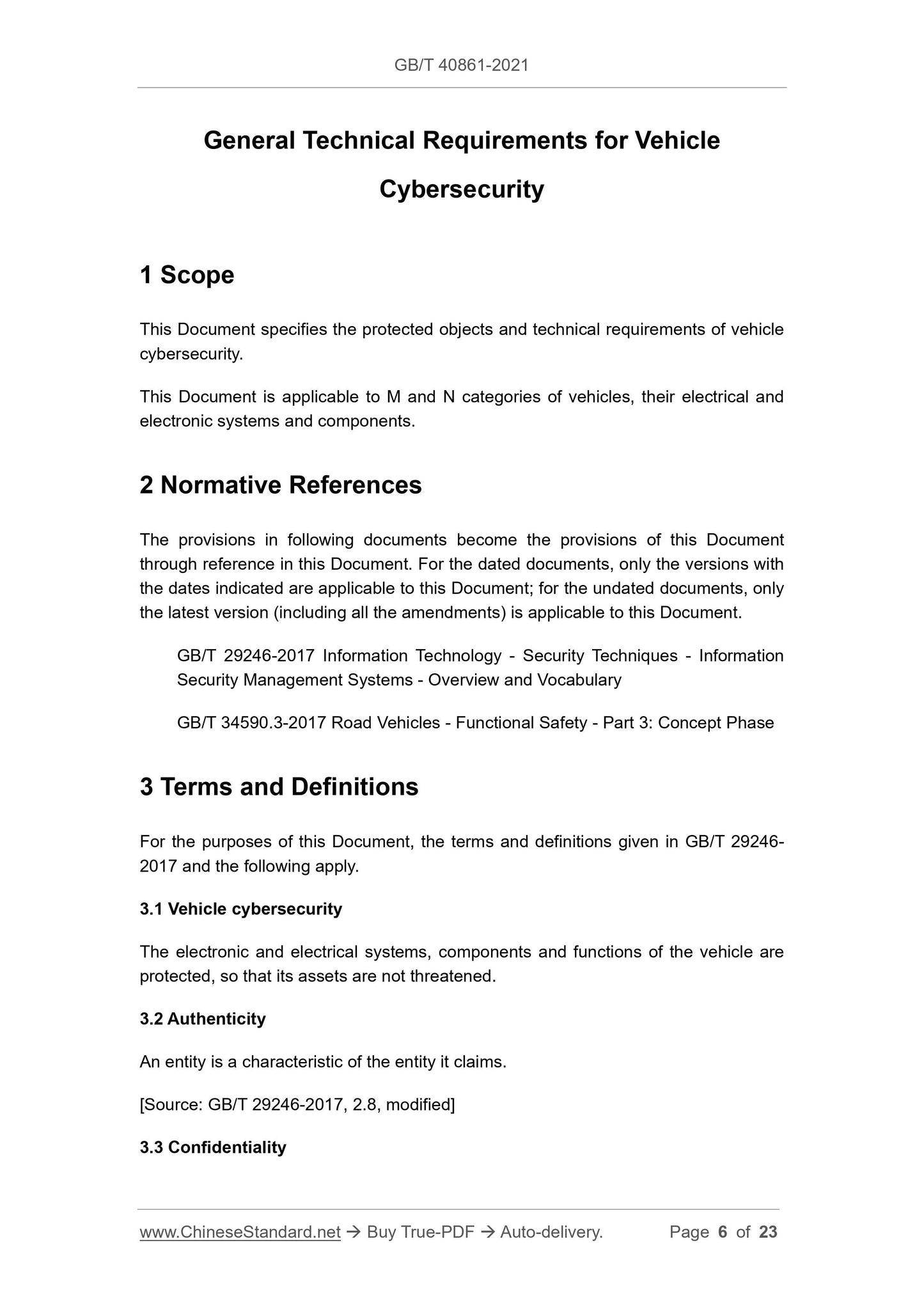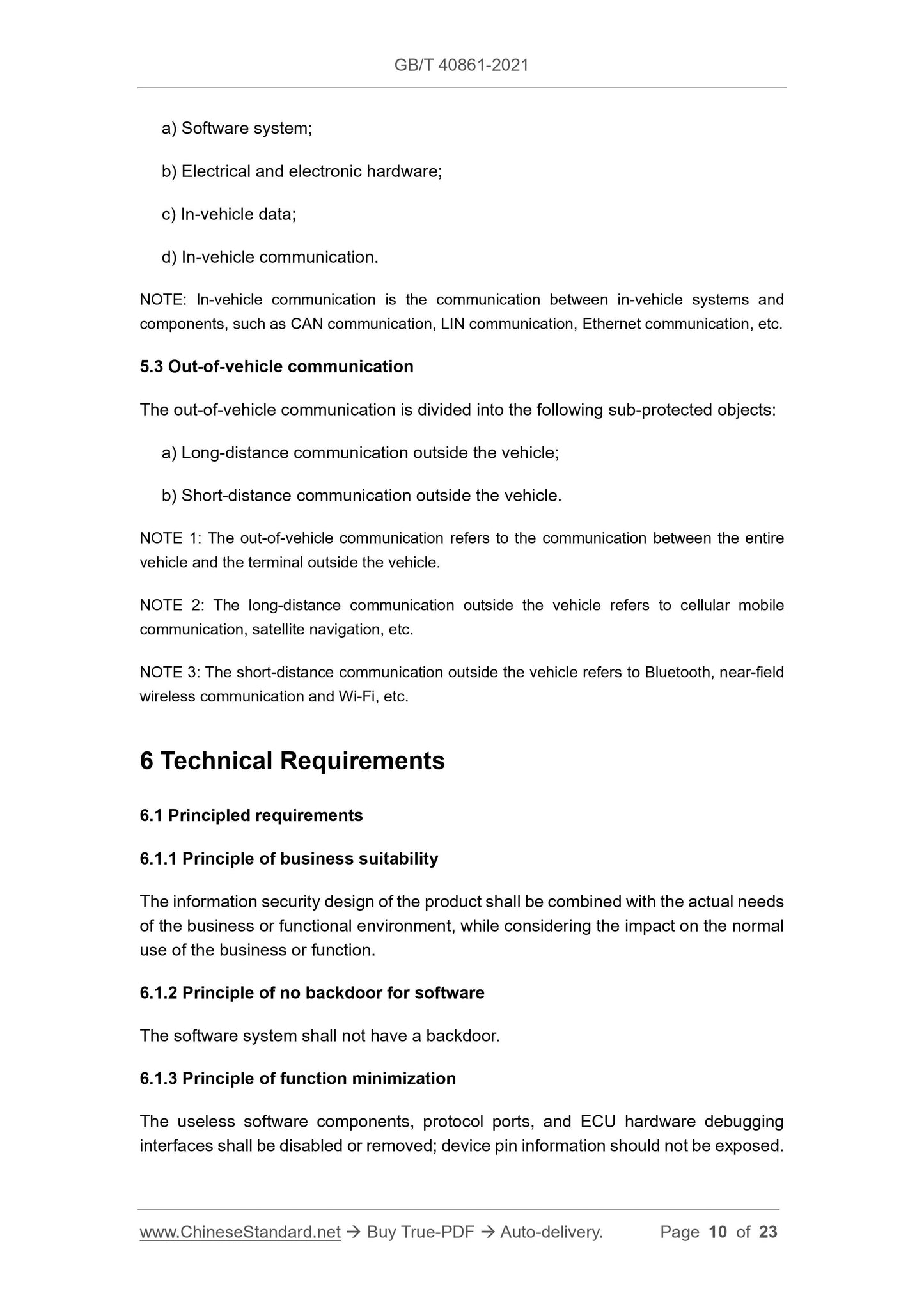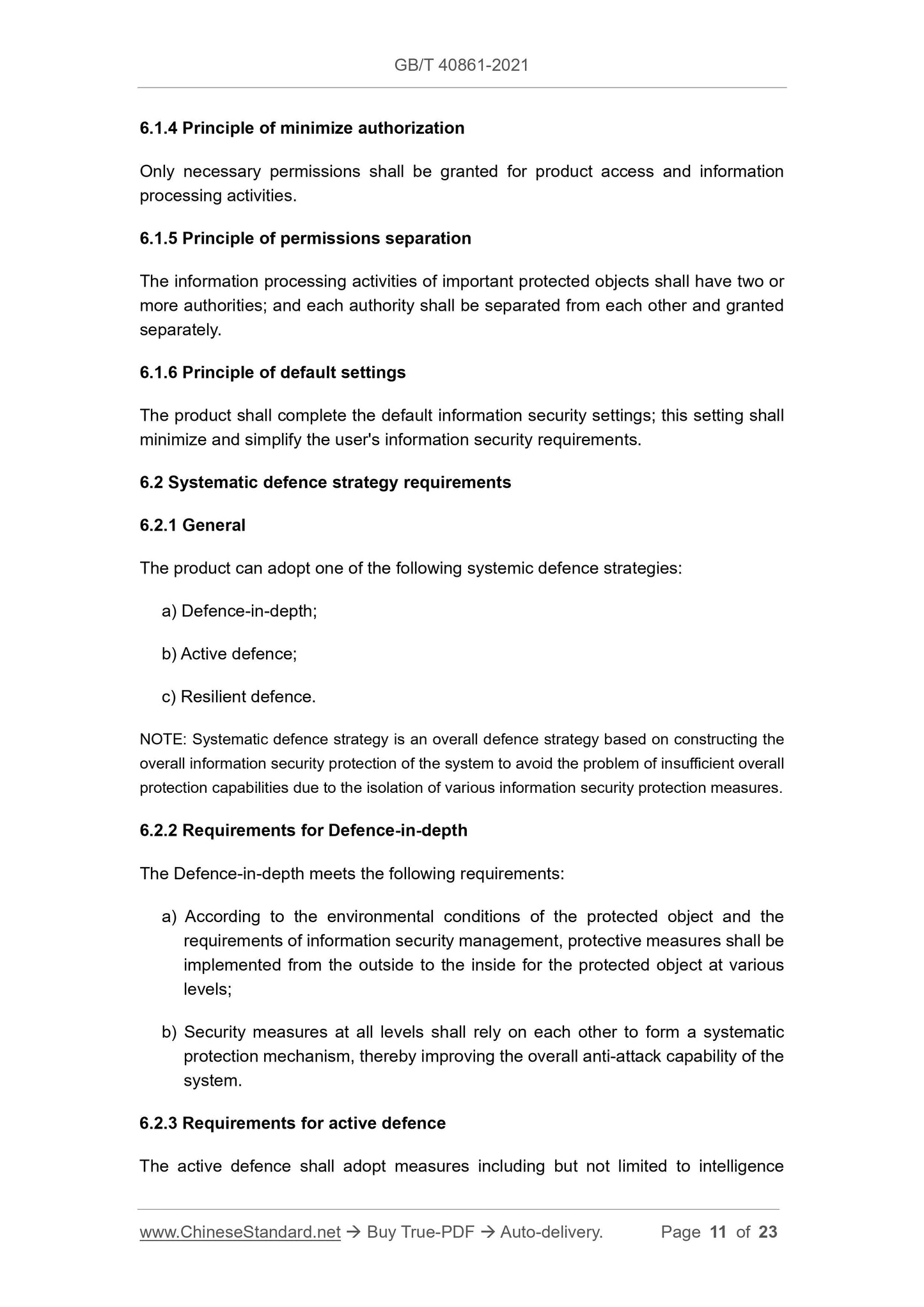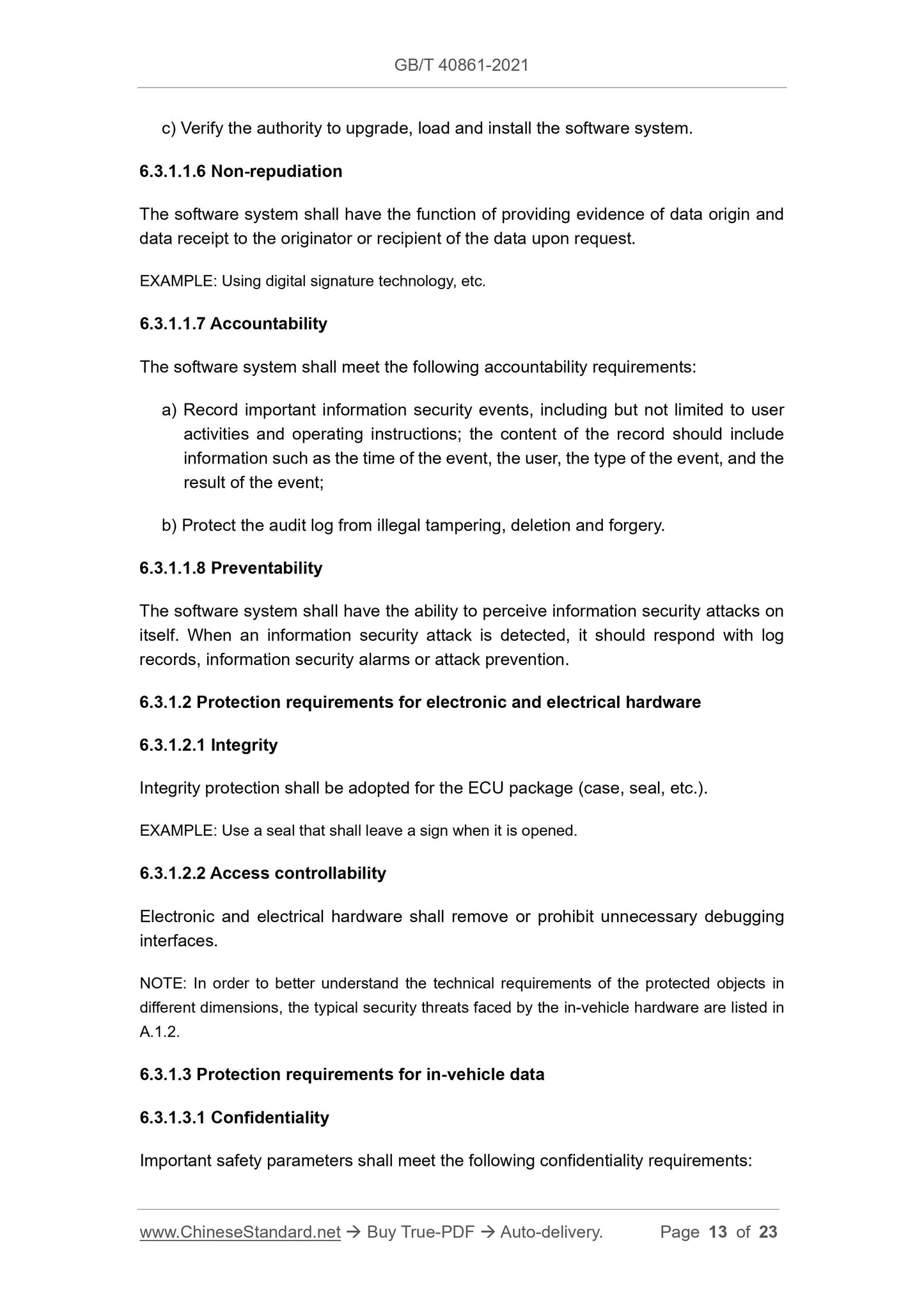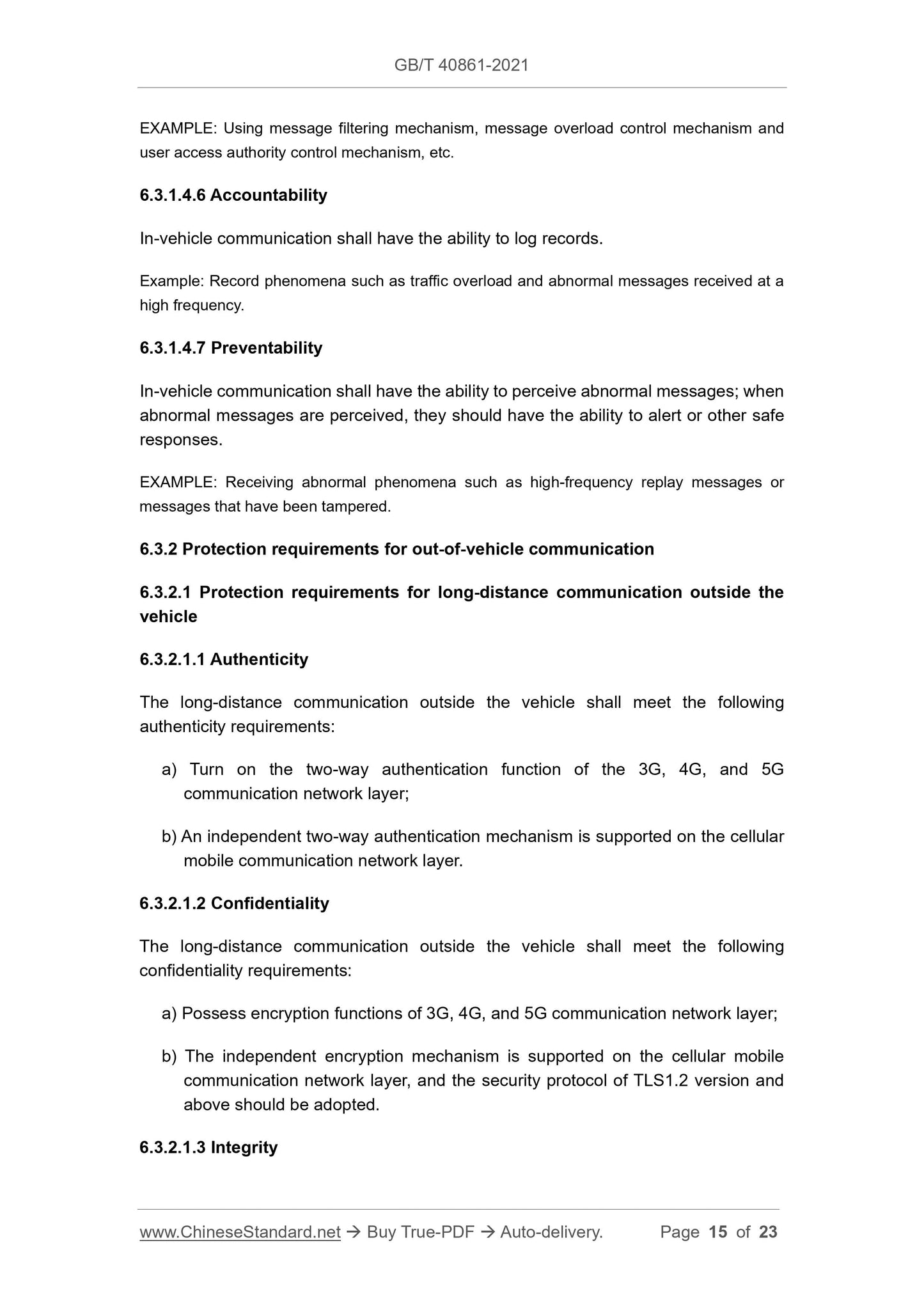1
/
of
8
www.ChineseStandard.us -- Field Test Asia Pte. Ltd.
GB/T 40861-2021 English PDF (GB/T40861-2021)
GB/T 40861-2021 English PDF (GB/T40861-2021)
Regular price
$260.00
Regular price
Sale price
$260.00
Unit price
/
per
Shipping calculated at checkout.
Couldn't load pickup availability
GB/T 40861-2021: General technical requirements for vehicle cybersecurity
Delivery: 9 seconds. Download (and Email) true-PDF + Invoice.Get Quotation: Click GB/T 40861-2021 (Self-service in 1-minute)
Newer / historical versions: GB/T 40861-2021
Preview True-PDF
Scope
This Document specifies the protected objects and technical requirements of vehiclecybersecurity.
This Document is applicable to M and N categories of vehicles, their electrical and
electronic systems and components.
Basic Data
| Standard ID | GB/T 40861-2021 (GB/T40861-2021) |
| Description (Translated English) | General technical requirements for vehicle cybersecurity |
| Sector / Industry | National Standard (Recommended) |
| Classification of Chinese Standard | T40 |
| Word Count Estimation | 18,199 |
| Issuing agency(ies) | State Administration for Market Regulation, China National Standardization Administration |
Share
